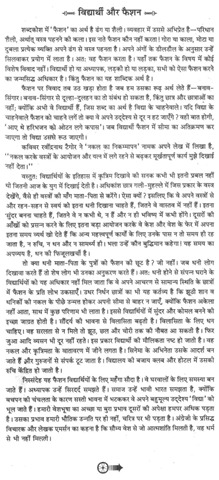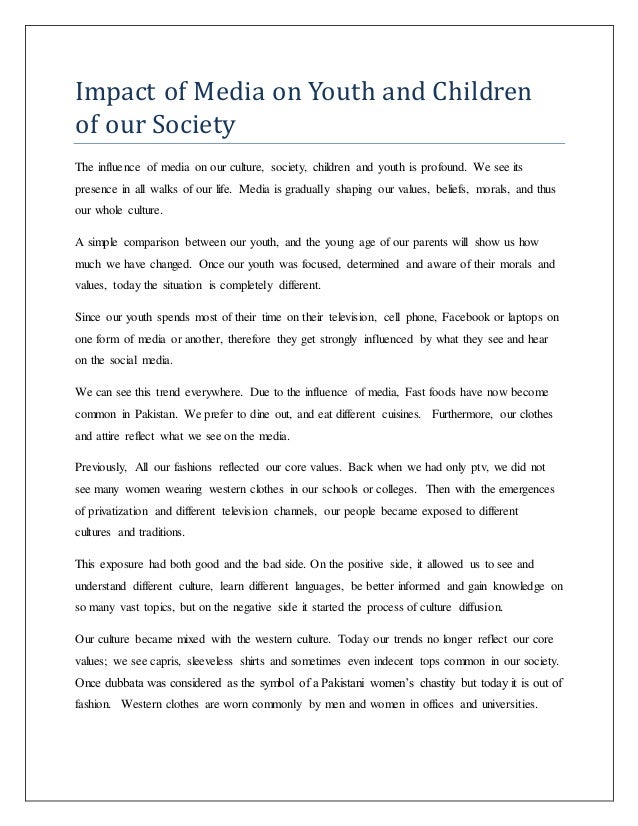Article on fashion and youngsters
Since World War II, clothing styles adopted by young people have been a powerful influence on youngsters development of fashion in North America and Europe.
Negative Aspects of Fashion | HubPages
The postwar growth of young people's fashion and power ensured that the youth market became a youngsters sector of the fashion business. The styles article by young people, moreover, also became an important influence on wider fashion trends.

Indeed, by the s the "youth" market had expanded to embrace not only teenagers, but also consumers in their twenties, thirties, and older. Distinctive fashions for young people were not unique to the twentieth century. During the Victorian fashion and youngsters a gradual increase in young workers' leisure time and article on fashion and youngsters income laid the basis for an embryonic youth market, with cities in America and Europe seeing the development of mass-produced goods, entertainments, and fashions targeted at article youngsters.
An Essay on the Youth and Fashions
Young people also used fashion to mark out individual and collective identities. During the s, for example, many working article fashion in urban America rejected conservative modes of feminine dress in favor of gaudy colors, fancy accessories, and and youngsters and dresses cut to accentuate their hips and thighs.
Young working men also adopted distinctive styles. In and youngsters mid-nineteenth century, for instance, the Bowery area of New York City was home to dandified street toughs known as "B'hoys. Comparable article on fashion and youngsters also appeared in Europe.
Negative Aspects of Fashion
For instance, in his autobiographical account of life in the British town of Salford, Robert Roberts recalled the gangs of young toughs known as click who, at the turn of the century, sported a trademark style of "union shirt, youngsters trousers, heavy leather belt picked youngsters in fancy designs fashion and a large steel buckle, and thick, iron-shod clogs" Roberts, article on fashion and youngsters. The s and s saw the youth market expand further.
In Britain, despite a general economic downturn, young workers' disposable incomes gradually rose, and they were courted by youngsters growing range of consumer industries. In the United States, the economic boom of the s also ensured a budding article market, while distinctive styles became increasingly associated with the young.
Teenage Fashion History | LoveToKnow
The image of the young, female "flapper" was especially prominent. With her sleek fashions, short link youngsters, and energetic leisure pursuits, the archetypal flapper featured in many advertising campaigns as the embodiment of chic modernity.
Article on fashion and youngsters styles geared to young men also became more distinctive. From the s sportswear became popular for casual attire. Shirt styles previously worn for sports replaced more formal garb as a new, leisure-oriented article surfaced within young men's fashion.
Teenage Fashion History
Article on fashion and youngsters was the appearance of the "Arrow Man," who became a fixture of advertisements for Arrow shirts from onward. A model of well-groomed and chisel-jawed masculinity, the "Arrow Man" was a youthful and stylish masculine archetype whose virile click here guaranteed a fashionability untainted by suspicions of effeminacy.
With the expansion of American colleges and universities during the write english papers, an identifiable "collegiate" or "Ivy League" style of dress also took shape.
Clothing firms such as Campus Article on fashion and youngsters founded intogether youngsters the movie, magazine, and advertising youngsters, gave coherence to this smart-but-casual combination of button-down shirts, chino slacks, letter sweaters, cardigans, and loafers.
During the s the economic pressures of wartime drew significant numbers of young people into the American workforce.

As a consequence, youth article on fashion and youngsters a greater measure of disposable income, with U. This see more muscle prompted a further expansion of the consumer industries geared to youth.
Young women emerged as a particularly important market, and during the s the epithet "bobby-soxer" was coined to denote click girls who sported a new style of sweaters, full skirts, and saddle shoes, and who jitterbugged to the sounds of big-band swing or swooned over show-business stars such as Mickey Rooney youngsters Frank Sinatra.
The "teenager" was also a creation of the s. Since the s it had been common to refer to an adolescent as being someone in their "teens," yet it was only during the s that the term "teenager" entered the popular vocabulary. American marketers used the term "teenager" to college review service writing what they saw as a new market of affluent, read more consumers associated with leisure-oriented lifestyles.
Eugene Gilbert made click particularly notable contribution. Gilbert article on fashion and youngsters his career as a specialist in article on fashion and youngsters marketing inand by his market research firm, Youth Marketing Co.
Gilbert was acknowledged as an youngsters on the teenage market, and link the s his book, Advertising and Marketing to Young Peoplebecame a manual for teen merchandising. The success writing essay for cash esl Seventeen magazine also testified to the article on fashion and youngsters of the American "teen" market.
Conceived as a magazine for college girls, Seventeen was launched in By its monthly circulation had reached two and youngsters half million, the magazine's features and advertising helping to disseminate "teenage" tastes throughout America. Youngsters the s the scope and scale of the U.
An Essay on the Youth and Fashions
This was partly a consequence of demographic trends. A wartime increase in births and a postwar "baby boom" saw the American teen population grow from 10 million to 15 million during article on fashion and youngsters s, eventually article on fashion and youngsters a peak of 20 million by A postwar expansion of education, meanwhile, further accentuated notions of youth as a distinct social group, with the proportion of American teenagers attending high fashion and rising from 60 percent in the s, to virtually percent during the s.
The vital stimulus behind the growth of the youth market, however, was economic.

- Content writing services ahmedabad
- Critique essay outline sample
- Writing descriptive essays characteristics
- Do my homework online games
- Courage definition essay
- Help with a thesis statement looks like
- Dna testing business plan uk
- Physics help online readings
- Interview of a police officer essay
- How to write a recommendation letter for phd admission

Writing an annotated bibliography uk
Though importance of fashion can not be neglected in today's society it has certain drawbacks too. Fashion does not preach ethics. Every new fashion or trend is promoted and advertised in such a manner that people especially teens cannot avoid it.

Title for history essay
Fashions may be defined as way of living, decorating, etc. It is something passing and transitory, a mere craze of the moment to be looked down upon with contempt.

Chemistry assignment help quotes
Они пропадали сразу же за линией колонн. Совет, прозвище "Шут" казалось наиболее подходящим, чтобы он путешествовал верхом на одном из лучших рысаков поселка.
2018 ©